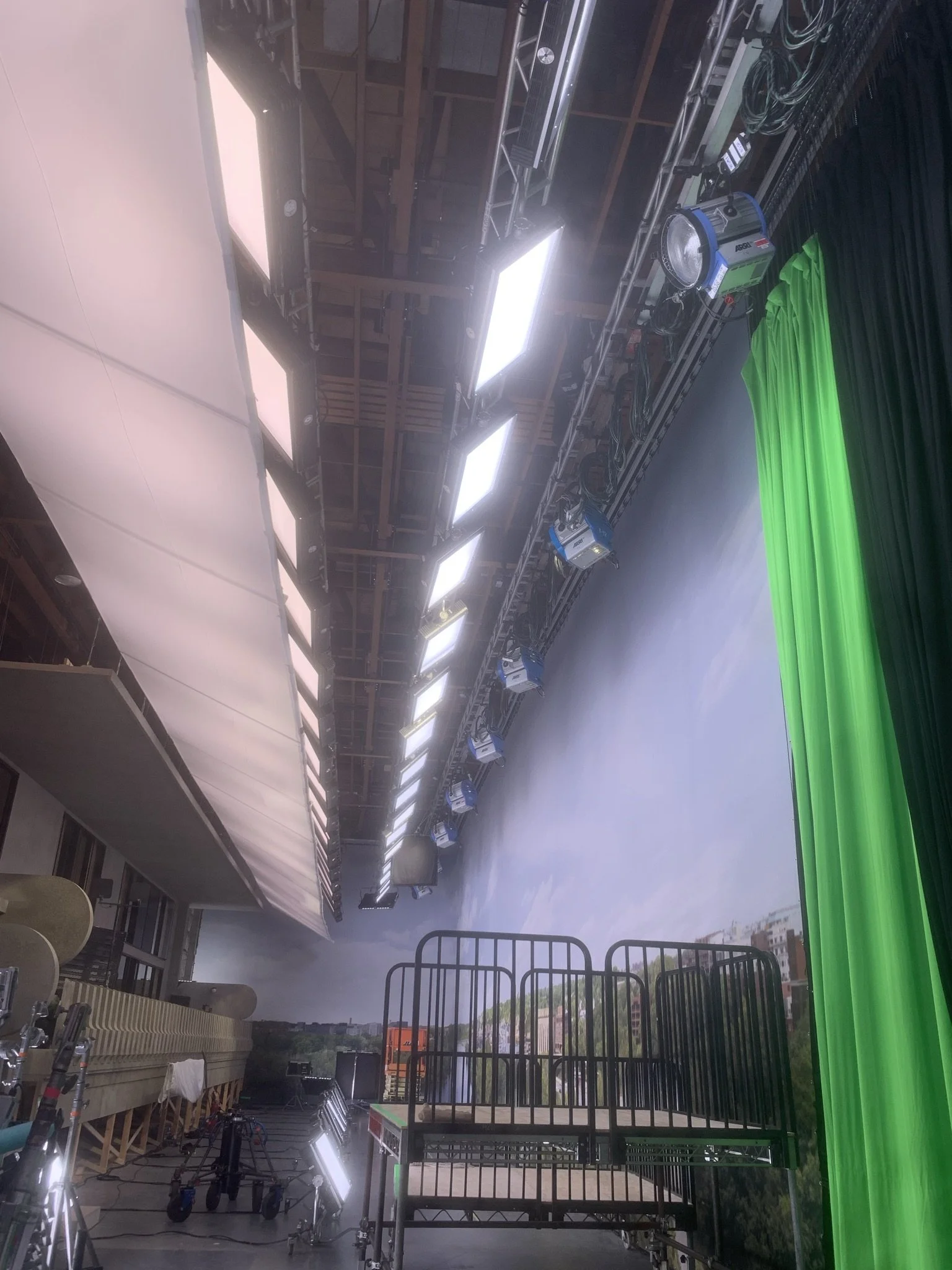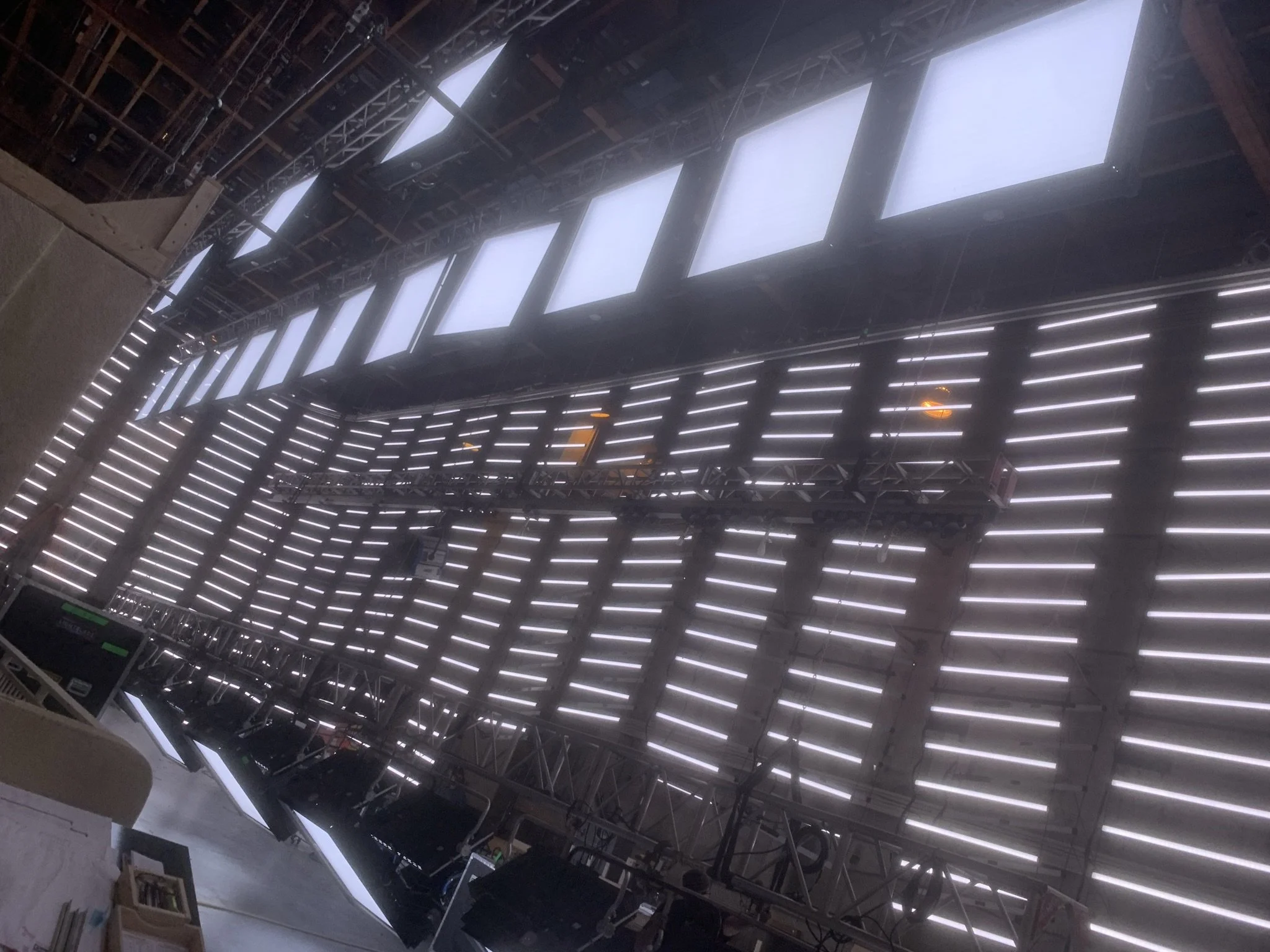“Gaslit” Interview with Gaffer Matt Ardine
We had the opportunity to check in with gaffer Matt Ardine to talk about the lighting work on Gaslit starring Julia Roberts and Sean Penn and here is what he had to say.
THE CHALLENGES OF A PERIOD PIECE
My approach, with Larkin Seiple, Series DP, was to get the right lights in the right places and have them all on the lighting console for manipulation with the lighting programmer, Harold Lacuesta. That is always what I am trying to achieve for Larkin. With this particular project, for anything on camera, we had to make sure it was period accurate. There are several TV studio scenes and a party scene. Normally, I would use LED’s and moving lights for these types of scenes. But being a period piece, I had to stick with Mole Baby 407’s and Parcans.
LED LIGHTING IN A STUDIO OR ON LOCATION
I have been a very early adopter of LED. I used a lot of Color Kinetic and Litepanel products starting in 2009. Then we started using ETC Source 4 Lustres, custom Litegear Literibbon fixtures, Skypanels, and Digital Sputniks. Currently, my go to items are Digital Sputniks DS9, ECT source 4 lustre3, Astera Titans, Helios, NYX, Fiilex Q series, and Litegear Litemat Spectrums. Now a days, it needs to be full color, have good color rendition, and dim to zero well without color shifting.
Using exclusively full-color LED lighting hooked up to a lighting console allows us to discover the look of the scene quickly. By changing the intensity, color, and even focus, we can instantly go through various looks to find the one that is most appropriate for the scene. Oftentimes, we get everything in place, watch the rehearsal then tweak everything at the lighting console. Yes, power does become easier but that is quickly replaced with the need for data networks.
The method is the same for me with Studio vs Location. In the studio, we can control every light so we can set the exposure and color temperature anywhere that we want. But on location, there can be a source that we don’t have control over which dictates foot candles needed or color balance. In the instance of a day interior scene, many times we are forced to balance to the ambiance or direct light coming in the windows. Because of this, large HMI’s are necessary. I try to avoid HMI because they cannot dim or change color. But in many circumstances, there is currently no way around needing several Arri MAX’s.
We used Cineo lights for everything! Here is an example on just one of the sets - outside of the large Mitchell Penthouse set, we had 4 rows of Cineo lights. Each row was 130’ long. There were 40 LB800’s at the top and on the bottom row to light the printed Rosco Softdrop. There were a row of 19 Lightblade 1k’s that we called the “Big Softy”. The lights were tilted at a 45-degree angle and pointed into the large bay windows. They were on a long truss that allowed the trim to go up and down to change the angle of the light and a large diffusion frame could even come down in front of it. The last row outside the windows consisted of 9 Lightblade 1k’s pointed straight down, as top light for the porch. Inside the penthouse were 28 Lightblade 1k’s also pointed straight down and used as top light. We put these in 10-zone mode so that we could pick exactly where we wanted the source to come from.
TECHNOLOGY CHANGES IN SET LIGHTING
The push towards LED has created two huge changes in the lighting department. First, the lighting programmer is now a big part of the creative process. A good programmer needs the technical know-now to operate the console understand color manipulation. and have a cinematic eye. The combination of a fully controllable lighting rig with a good programmer allows the DP to paint the set in real time with the ability to completely transform the space with a push of a button. The second shift is the creation of large lighting control networks. The shift in the rigging electric department has gone from putting down large amounts of power to installing incredibly complicated ethernet networks. A typical TV show might be around 10,000 channels of control, and I've done sets with up to 180,000 DMX channels. Pushing this data around the set requires set lighting technicians to have a large amount of IT knowledge.


